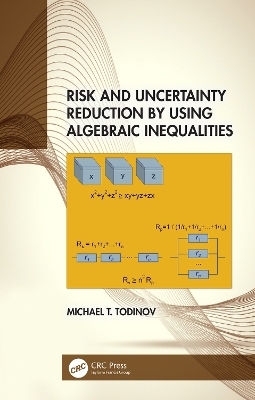
Risk and Uncertainty Reduction by Using Algebraic Inequalities
CRC Press (Verlag)
978-0-367-50401-4 (ISBN)
This book covers the application of algebraic inequalities for reliability improvement and for uncertainty and risk reduction. It equips readers with powerful domain-independent methods for reducing risk based on algebraic inequalities and demonstrates the significant benefits derived from the application for risk and uncertainty reduction.
Algebraic inequalities:
• Provide a powerful reliability improvement, risk and uncertainty reduction method that transcends engineering and can be applied in various domains of human activity
• Present an effective tool for dealing with deep uncertainty related to key reliability-critical parameters of systems and processes
• Permit meaningful interpretations which link abstract inequalities with the real world
• Offer a tool for determining tight bounds for the variation of risk-critical parameters and complying the design with these bounds to avoid failure
• Allow optimising designs and processes by minimising the deviation of critical output parameters from their specified values and maximising their performance
This book is primarily for engineering professionals and academic researchers in virtually all existing engineering disciplines.
Michael T. Todinov, PhD, has a background in mechanical engineering, applied mathematics and computer science. Prof.Todinov pioneered reliability analysis based on the cost of failure, repairable flow networks and networks with disturbed flows, domain-independent methods for reliability improvement and risk reduction and reducing risk and uncertainty by using algebraic inequalities.
1. FUNDAMENTAL CONCEPTS RELATED TO RISK AND UNCERTAINTY REDUCTION BY USING ALGEBRAIC INEQUALITIES. 2. PROPERTIES OF ALGEBRAIC INEQUALITIES AND STANDARD ALGEBRAIC INEQUALITIES. 3. BASIC TECHNIQUES FOR PROVING ALGEBRAIC INEQUALITIES. 4. USING OPTIMISATION METHODS FOR DETERMINING TIGHT UPPER AND LOWER BOUNDS: TESTING A CONJECTURED INEQUALITY BY A SIMULATION - EXERCISES. 5. RANKING THE RELIABILITIES OF SYSTEMS AND PROCESSES BY USING INEQUALITIES. 6. USING INEQUALITIES FOR REDUCING EPISTEMIC UNCERTAINTY AND RANKING DECISION ALTERNATIVES. 7. CREATING A MEANINGFUL INTERPRETATION OF EXISTING ABSTRACT INEQUALITIES AND LINKING IT TO REAL APPLICATIONS. 8. OPTIMISATION BY USING INEQUALITIES. 9. DETERMINING TIGHT BOUNDS FOR THE UNCERTAINTY IN RISK-CRITICAL PARAMETERS AND PROPERTIES BY USING INEQUALITIES. 10. USING ALGEBRAIC INEQUALITIES TO SUPPORT RISK-CRITICAL REASONING.
| Erscheinungsdatum | 12.09.2024 |
|---|---|
| Zusatzinfo | 39 Illustrations, black and white |
| Verlagsort | London |
| Sprache | englisch |
| Maße | 156 x 234 mm |
| Gewicht | 385 g |
| Themenwelt | Technik ► Maschinenbau |
| ISBN-10 | 0-367-50401-4 / 0367504014 |
| ISBN-13 | 978-0-367-50401-4 / 9780367504014 |
| Zustand | Neuware |
| Haben Sie eine Frage zum Produkt? |
aus dem Bereich


